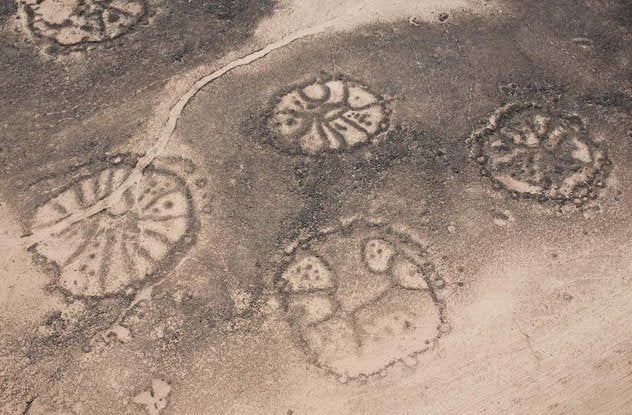The Mysterious Stone Circles Of Jordan

The stone circles of Jordan were discovered in 1920 by Lionel Rees, a British pilot that flew across the deserts of Jordan.
Rees took several pictures of these immense stone circles, giving us the earliest aerial archaeological photographs of the structures.
However, for unknown reasons, they were forgotten by the archaeology world and it took another 60 years before anyone noticed them again.
It was only in the last 10 years, they have started to gain more attention through the work of David Kennedy, a researcher at the University of Western Australia.

These “Big Circles”, as they’re called, are between 220 to 455 meters in diameter and they are almost perfectly round.
Their shape can only be seen from above, and at ground level, they appear nothing more than big piles of rocks.
There are 12 of these structures in Jordan, and one recently found in Syria, that are all pretty much identically build.
Their design is “too close to be a coincidence,” said Kennedy to Live Science, and this has led archaeologists to believe that, despite the fact they’re spread out across the region, they must have served a similar purpose.

Eight of the Big Circles are in west-central Jordan, between the Wadi el-Hasa and the edge of the Shara escarpment, and the second group of four Big Circles is just north of the Azraq Oasis.
Evidence from the images, as well as important dating of artifacts on the ground, suggests that the circles were built at least 2,000 years ago – but, as Kennedy suggests, they may have been constructed in prehistoric times, before writing was invented, as we know that finding remains near an ancient sites does not necessarily tell us if they were left there by the original builders of the structures.

They could’ve been left there by later civilizations that settled in the area like one of the circles seems to demonstrate.
As a matter of fact, one of the structures found contains three rock piles, known as cairns, on its edge, which may have been used for burial.
As Kennedy told Live Science: “my inference is that the cairns were built later when the enclosure was no longer significant”.
This is also the case for many other megalithic sites.
The images also confirmed that none of the stone circles originally contained openings, so people would have had to jump over the walls to get inside.
This means they wouldn’t be suitable as corrals for housing livestock, which was a previously suggested theory.
Still, no one knows who built the Big Circles, when they were created, and, most importantly, why they are there.

